【122】「PCR検査は、ウイルス検査に使えない」マリス博士の真意とは - 大橋眞
PCR検査は、遺伝子の断片を見るものであり、ウイルス検査には向いていません。また、病原体を検査する方法でもありません。PCRの発明者、キャリーマリスは、「PCRは、感染症の診断に使ってはならない」という趣旨の発言をしたと言われています。実際には、キャリーマリスの発言は、「HIVウイルス数をPCRで測定することはできない」というのが正しいようです。
いくつかのPCRの中でも、リアルタイムPCRは、DNAの合成をリアルタイムで追いかけることが出来るために、何回目のサイクルでDNA合成が確認できたかというCt値によって、サンプル中の遺伝子のコピー数がある程度推定できます。現在行われているPCR検査は、リアルタイムPCRで行われている場合が多いようです。感染研のPCRマニュアルや、市販のPCRキットにもリアルタイムPCR対応になっています。前述の「ウイルス数をPCR法で測定できない」とは、一体どういう意味でしょうか。
ウイルスは変異が起こることが知られています。特にRNAウイルスは、変異が起こりやすいのです。遺伝子の変異の中でも、最も起こりやすい塩基のの置換という変異について考えてみます。、塩基の置換にも、大きく分けてたんぱく質の変異に影響しない置換(同義置換)とたんぱく質の変異に影響する置換(非同義置換)があります。同義置換は、非同義置換に比べて圧倒的に頻度が高い変異です。また、塩基置換以外の変異は、塩基置換の頻度に比べて大変少ないのです。そのために、遺伝子変異の大部分は、たんぱく質の変異に影響しない、同義置換になります。
同義置換であっても、PCRのプライマーの結合性には、大きな影響が出ます。プライマーの結合部位における同義置換の変異によってPCRによる遺伝子増幅が起こらなくなるのです。そのために、この部位に変異のあるウイルスは、カウントされません。未知のサンプルの場合、変異体の種類、変異体の割合などが不明です。したがって、このようなサンプルを使って、ウイルス数をPCR検査により測定することはできないわけです。病原体の検査には、もちろん使うことはできません。キャリーマリスの発言は、その理由が省略されているためか、その真意を十分に理解されていないようです。このことを理解しないまま、PCR検査を広げることは無意味なだけでなく、危険なことだと言えるでしょう。
The PCR test looks at a fragment of a gene and is not suitable for virus testing. Nor is it a way to test for pathogens. Kary Mullis, the inventor of PCR, is said to have made a statement to the effect that "PCR should not be used in the diagnosis of infectious diseases." In fact, Kary Mullis's statement seems to be correct: "The number of HIV viruses cannot be measured by PCR."
Among several PCRs, real-time PCR can follow DNA synthesis in real time, so the copy number of genes in a sample is estimated to some extent by the Ct value of how many cycles DNA synthesis was confirmed. I can do it. It seems that the PCR tests currently performed are often performed by real-time PCR. Real-time PCR is also supported for PCR manuals of the Institute of Infectious Diseases and commercially available PCR kits. What does the above-mentioned "virus count cannot be measured by PCR method" mean?
The virus is known to mutate. RNA viruses are especially prone to mutations. Consider the mutation of the most common base substitution among gene mutations. , Base substitutions can be broadly divided into substitutions that do not affect protein mutations (synonymous substitutions) and substitutions that affect protein mutations (non-synonymous substitutions). Synonymous substitutions are overwhelmingly more frequent mutations than non-synonymous substitutions. In addition, mutations other than base substitution are very few compared to the frequency of base substitution. As a result, the majority of gene mutations are synonymous substitutions that do not affect protein mutations.
Even if it is a synonymous substitution, it has a great effect on the binding property of PCR primers. Mutations in synonymous substitutions at the primer binding site prevent PCR gene amplification. Therefore, viruses with mutations in this site are not counted. In the case of an unknown sample, the type of mutant, the proportion of mutants, etc. are unknown. Therefore, it is not possible to measure the number of viruses by PCR using such samples. Of course, it cannot be used to test for pathogens. It seems that Kary Mullis's remarks are not fully understood, probably because the reason is omitted. Without understanding this, expanding PCR testing is not only pointless, but also dangerous.
-
 1:39
1:39
IOL-IndependentOnline
3 years ago(PCr)
10 -
 10:17
10:17
Kaniya Keme Tv
1 year agoTHE CREATOR OF THE PCR TEST ONCE SAID
10 -
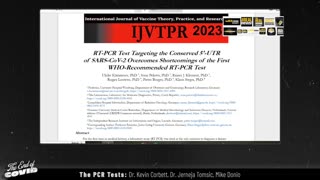 1:43:14
1:43:14
The Real News Network
10 months agoTHE PCR TESTS Dr. Kevin Corbett, Dr. Jerneja Tomsic
230 -
 6:00
6:00
GeoGodley
1 year agoShocking News Regarding PCR Test
236 -
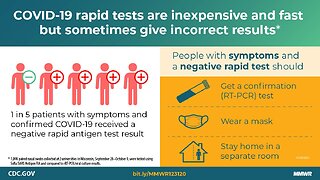 6:25
6:25
Pandemic
1 year agoThe PCR test is useless
247 -
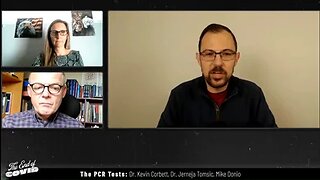 1:44:38
1:44:38
ime
9 months agoThe PCR Tests, Dr. Kevin Corbett, Dr. Jerneja Tomsic | 6. The PCR Tests | The End of Covid
267 -
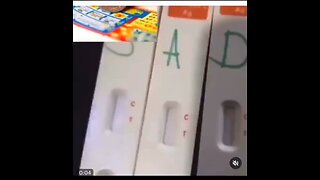 0:26
0:26
RealDeepHouse
1 year agoFaulty PCR Test!
20 -
 51:21
51:21
Watchman's Duty
1 year agoThe PCR TEST FRAUD
8.42K24 -
 1:19
1:19
Човечеството под атака
1 year agoНаноботи в PCR-тампоните
21 -
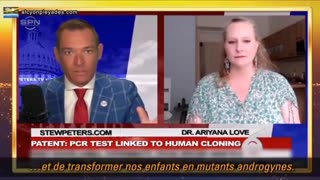 6:26
6:26
Survival Jules Seeks Truths
4 months agoReal purpose of PCR “tests”: human cloning, hybridizing with insects, mutate offspring
120